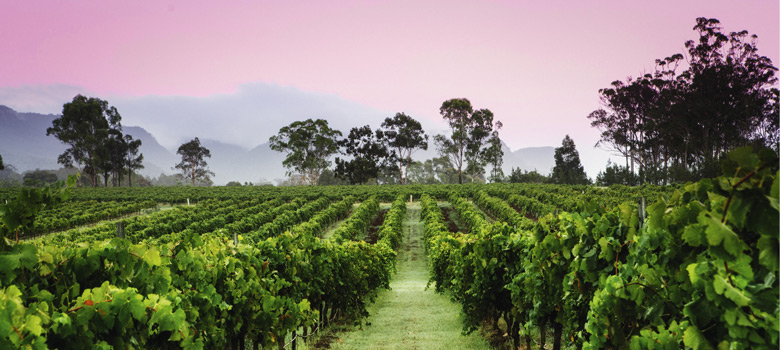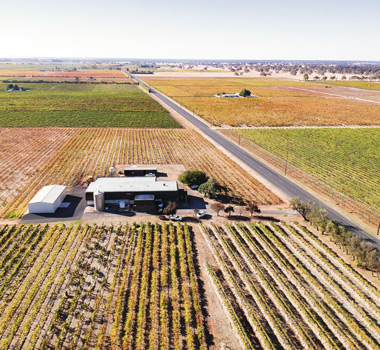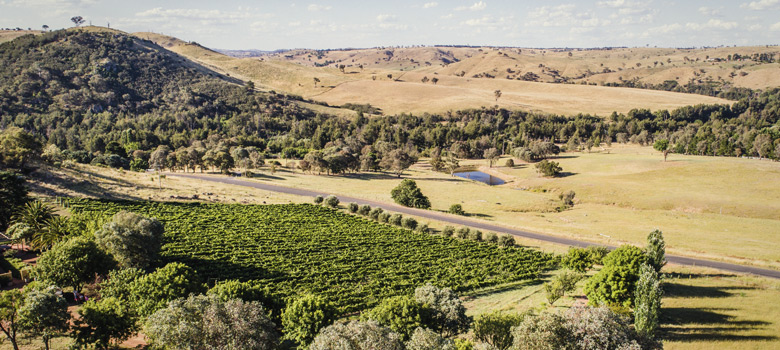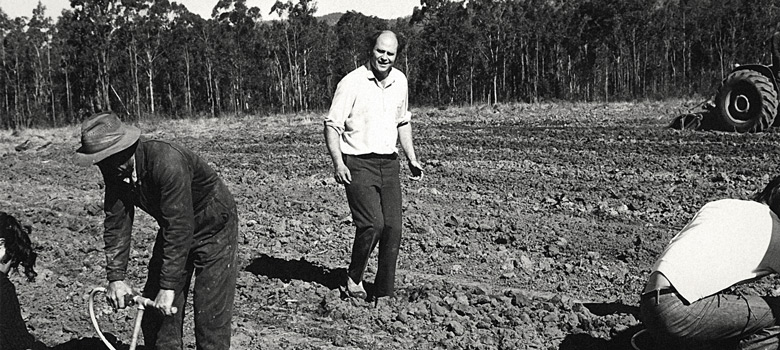
Life
Tasting Shiraz Across Australia
Few wine varieties present a destination in a glass like Shiraz. When you drink a glass of wine, can you taste a sense place? Where does the wine come from, and what is it telling you?
We asked some of Australia’s leading Shiraz winemakers to explain the grape’s connection to their place. Discover the unique terroir tastes of six of Australia’s most distinctive Shiraz regions.
A Spiritual Connection to Wine
In the Dreamtime, the promontory of land we now call Mornington Peninsula was flat and the body of water that licked its shores was a freshwater lake that had yet to grow up to be a saltwater bay.
It was here that the great creator spirit, Bunjil, faced a wild, terrifying storm rolling in off the ocean.
“So,” says Wurrung-Bundjalong man, Lionel Lauch, “he made the land rise up, all through Arthurs Seat and Cape Schanck and he formed a giant cave so he could shelter from the storm. Afterwards, he left the land the way it was because he liked it.”
Lionel is relating his people’s history on a cultural walk at the No. 16 beach divide at Rye – otherwise known as the Rye back beach – on a bright Saturday afternoon in February as part of the 2019 Pinot Celebration Australia event.
Lauch’s people have lived, hunted, gathered and gained a deep spiritual connection to this coastline for more than 20,000 years.
At the Pinot Celebration, the distinctly European concept of terroir and its role in helping to define regionality in wine was being explored. Out here, amid the sand dunes and spikey bushes with leaves and fruit that taste salty and herby, it simply is.
Wine is Elemental

.jpg?lang=en-AU)
And when symposium goers were able to connect what we were smelling and tasting out in the wild with the wines tasted in the symposium, it was a powerful revelation. It was there in the sea spray and rockpool aromas of Mornington Peninsula Pinot Gris and Chardonnay, and the dried herbs, thyme and bracken of Peninsula Pinot Noir, and there was something else felt, too. The essence of belonging.
Terroir is a catch-all phrase dating back to the early 1900s, when it was used to underpin France’s Appellation d’Origine Contrôlée or wine classification system, and has now morphed into a vaguely-defined international term used to describe a place where particular vines grow.
Some look to the soil and topography as terroir’s defining feature, some to the climate and some to a combination of all that lies below the ground and above in one spot.
But it can have – and deserves – a wider interpretation.
Terroir can embrace winemaking traditions, the kind associated with one family and a particular winemaking style passed down for generations.
It can also include the history and culture of wine villages and regions where making wine enjoys a long heritage. Or the eucalypt characters or black pepper in red wines from some areas, which can alert keen tasters immediately to a particular region.
But maybe terroir can also be the sense of belonging to country that Lionel Lauch and Aboriginal elders speak of.
One grape that resolutely belongs in this country, for many it defines Australian wine globally, is Shiraz.
It was among the earliest grapes planted here, it undergoes subtle transformations as it moves from region to region, yet no other grape remains resolutely connected to site and says quite so eloquently: ‘This is my place, I belong here.’
We asked some of Australia’s leading Shiraz winemakers to explain the grape’s connection to their place.
MCLAREN VALE
.jpg?lang=en-AU)
One of the reasons so many people are attracted to the coast is the mild climate – it creates a relaxed vibe among locals and visitors alike. This is certainly the case in McLaren Vale where the St. Vincent Gulf has a profoundly moderating effect on climate. What would normally be a warm to hot region becomes less extreme and more Mediterranean.
The sea is seen and felt and is definitely influential – even the grapes slow down in this coastal locale.
“McLaren Vale as a region is very compact in terms of proximity, so all sites benefit from the effect of the Gulf,” explains Alexia Roberts, chief winemaker at Penny’s Hill.
“During the summer months, the afternoon sea breeze helps cool the vines down and significantly reduces the overnight temperatures, resulting in a slow, even ripening.”
Fellow winemaker, Corrina Wright at Oliver’s Taranga believes the rich and generous nature of McLaren Vale Shiraz enjoys more “light and shade” in its character due to the sea influence. “You see more black fruits, mulberry, mocha, sweet spices and structural tannins,” she adds.
COONAWARRA
.jpg?lang=en-AU)
.jpg?lang=en-AU)
A visit to Coonawarra leaves you struck by its remoteness. And being isolated on their famous patch of terra rossa soil, the winemakers have become focussed on understanding its unique attributes – a sense of place you can certainly taste in the Shiraz.
“The terra rossa can vary in depths quite dramatically throughout a single vineyard planting,” says Dan Redman of Redman Wines. “We have Shiraz vines on very shallow soils, basically rocky. And these grapes are always the first picked with beautiful rich ripe red fruit flavours. On deeper terra rossa we have a more medium bodied Shiraz with pepper and spiciness.”
And the region’s plentiful red gum woodlands contribute their own special magic to Coonawarra red wines, a distinctive eucalypt aroma and flavour. This is also local terroir at work.
CANBERRA DISTRICT

While the politicians of our capital might be slow to affect change, the winemakers of the Canberra District aren’t afraid of making big decisions. In particular, owner, winemaker of Clonakilla Tim Kirk was one of the first to decide that the beauty of the region’s cool climate Shiraz needed showcasing.
With altitudes reaching 800 metres and more, the Canberra District climate is distinctly cool to mild, which has proven an exciting combination for creating an individual style of Shiraz.
Tim describes the combination of region and grape in four words: “granitic, elevated, cool, bright.”
“Granitic soils and cool nights give Shiraz with lots of perfume in the spice, floral, red berry spectrum,” he says. “Fine tannins predominate, we love to say silky, and the palate is never more than medium-bodied. What more could you want in a wine?”
At 600 metres and resting in fertile volcanic soils, Stephanie Helm’s vineyard at The Vintner’s Daughter produces award-winning Shiraz. She puts it down to the locale. “Canberra’s unique climate has a profound effect on ripening Shiraz,” she says. “Our summers, while hot, are characterised by cold snaps, our autumns are warm, but with cold nights. This slows down ripening and locks in flavours that may be lost in warmer regions.”
Alex McKay at Collector Wines captures the increasingly celebrated Canberran Shiraz style succinctly: “Beautifully moderated tannin, predominantly red fruits, perfumed, spicy.”
HUNTER VALLEY

Australia’s oldest viticultural area is comprised of gently undulating valley slopes and flood plains, and a warm, humid climate that can prove challenging when producing Shiraz.
“The sub-tropical nature of the weather combined with low soil fertility means early ripening,” says Iain Riggs of Brokenwood. Vintage has been known to coincide with early autumn storms, indicating that weather is definitely a big part of the Hunter’s terroir story.
For Bruce Tyrrell at Tyrrell’s Wines, the effect of terroir is clear: “Medium-bodied, fine acid and tannin.”
Through the generations, Hunter winemakers have become resilient to the conditions, which is reflected in the bright attributes of their hugely successful modern Shiraz.
“The contemporary style of Hunter Shiraz is definitely focussed on aromatic freshness and vibrancy, the sweaty saddle notes of yesteryear are a thing of the past,” says Andrew Thomas of Thomas Wines. He sees the grape take on “notes of charcuterie, earthy, black tea and licorice,” with time in the bottle.